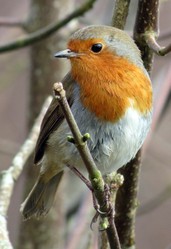Can Pumpkins Cross Pollinate With Squashes?
by CEdward
Do you grow pumpkins and squashes and have you thought about the possibility that the two could cross pollinate with one other? It’s a valid concern and it’s discussed here.
Pumpkins and squashes are often grown next to one another in home gardens as well as large commercial farms. There are numerous varieties of pumpkins and winter and summer squashes. These fruits are very closely related to one another with some varieties having the potential to weigh hundreds, even thousands of pounds, and some weighing no more than a pound. These squash and pumpkin types also come in many different colors beyond the typical orange field pumpkin and yellow crook neck summer squash. These colors for other squash and pumpkin varieties include: white, yellow, tan, green, blue, red, and in some cases even pink. While many of these pumpkin and squash fruits are heirloom varieties, there are many that are hybrids that have been developed from cross breeding between the different types. The fact is that cross pollination can occur between pumpkin and squash varieties, but the question is to what extent can this cross pollination occur?
Pumpkins, winter squash, and summer squash belong to the Cucurbita genus which is within the Cucurbitaceae family. Within the Cucurbita genus, there are four main species groups to which the varieties belong: C. Pepo, C. Maxima, C. Moschata, and C. Argyrosperma. Within the C. Pepo species, you find varieties like orange field pumpkins (that are found in abundance in the Autumn months), miniature gourd varieties, summer squash, zucchini, New England Sugar Pie pumpkins, etc. The C. Maxima species includes: Atlantic giant (the world’s largest pumpkin/winter squash variety), the Cinderella pumpkin, Blue Hubbard squash, Big Max, Jarrahdale just to name a few. The C. Moschata species includes: Fairytale pumpkins, Long Island Cheese, Butternut squash, as well as several other varieties. Included within the C. Argyrosperma species are Cushaw variety winter squashes. While these species groups are different and unique, they are also very closely related.
It may not be surprising but cross pollination can in fact easily occur between varieties of the same species if they are grown close to one another and flowering at the same. It is also true that cross pollination can occur between varieties of different Cucurbita species, although not so easily. Basically, pumpkin and winter squash varieties from the four above listed Cucurbita species can cross pollinate with one another or in other words any variety in the Cucurbita genus can cross with any other variety in the genus. Of course just because this cross pollination can occur across different species, it does not mean that it will or that you should necessarily expect to have non true to type seed as a result of inter-species crossing. Within a Cucurbit species though, it might be surprising to not have some cross pollination, if different plants are close enough to one another. This author has grown many different Cucurbit varieties over the last five years, including several of those listed above, and a lot of the time different varieties were planted next one another. This author is also a seed saver (and has planted from the saved seed on a few occasions) and upon allowing the bees to provide the pollination has encountered cross pollination to have occurred on a few occasions (more times it has probably occurred than is known). This author has witnessed some very nice looking and impressive “God given” crosses to occur (of course this is not always the result of a cross), through which deductive reasoning had to be used to determine fruit parentage including: Jack B Little (M or F) x Jack o Lantern (M or F), and Jarrahdale (F) x Atlantic Giant (M). While this author has seen cross pollination occur between varieties within a species, he has never witnessed a confirmed cross pollination to occur (which is verified by the characteristics of the offspring fruit grown from seed produced by the pollination) between two species result in hybrid seed. While this crossing is definitely possible between two Cucurbit species, it is in the opinion of this author, who is not an expert but is a grower that it would likely only occur in an extreme situation when say native, inter-species pollen is not available to a female flower but pollen from another Cucurbit species is.
So cross pollination is possible and can occur between Cucurbit varieties. This crossing occurs readily between varieties within a species, but is also possible all throughout the Cucurbita genus. With this being said, plan your garden carefully, especially if you are growing several different Cucurbits simultaneously and plan on saving the seed for future planting.
Resources:
Andres, T.C. 2004. Web site for the plant family Cucurbitaceae & home of The Cucurbit Network. http://www.cucurbit.org/family.html
Bodnar, Jody, Fresh and Ethnic Vegtables Specialist/OMAF (1987). Pollination of Vine Crops. Agdex#: 256/26. Ontario Ministry of Agriculture, Food and Rural Affairs.
Retrieved from: http://www.omafra.gov.on.ca/english/crops/facts/87-043.htm
Wehner, T.C., Barrett, C. (1996). Intercrossability of Cucurbit Species. Cucurbit Breeding, Horticultural Science, North Carolina State University
Retrieved from: http://cuke.hort.ncsu.edu/cucurbit/cbintercross.html
This article has been published on http://wizzley.com/, and its author, CEdward, does not permit it to be republished elsewhere. Links are appreciated, but please no copying.
Related Articles from this author
You might also like
Gardening in the PandemicDespite all the deaths of people the garden goes on as a sign of hope and bet...




 How To Safely Secure Large Holiday Blow Molds From Wind Damageon 02/13/2012
How To Safely Secure Large Holiday Blow Molds From Wind Damageon 02/13/2012
 Tips On Protecting Your Holiday Blow Mold Decorations From Sun Damageon 02/08/2012
Tips On Protecting Your Holiday Blow Mold Decorations From Sun Damageon 02/08/2012

Comments